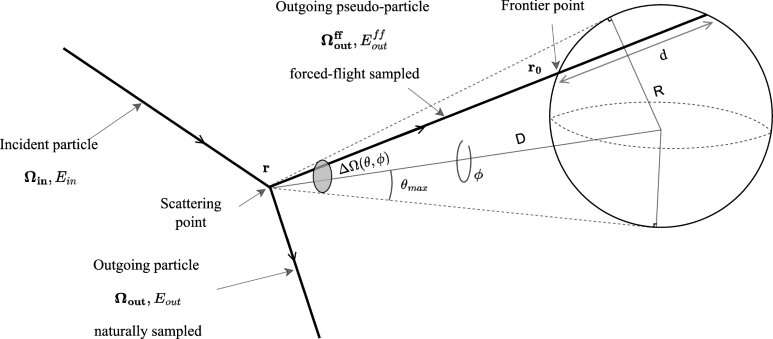This article has been reviewed according to Science X's editorial process and policies. Editors have highlighted the following attributes while ensuring the content's credibility:
fact-checked
trusted source
proofread
Better simulations for estimating neutron behaviors in 3D space, predicting neutron scattering

A new simulation approach named eTLE aims to improve the precision of a primary tool for estimating neutron behaviors in 3D space. This study examines the approach in detail—validating its reliability in predicting the scattering of neutrons in crystalline media.
Tripoli-4 is a tool used by researchers to simulate the behaviors of interacting neutrons in 3D space. Recently, researchers developed a new "next-event estimator" (NEE) for Tripoli-4. Named eTLE, this approach aims to increase Tripoli-4's precision using Monte Carlo simulations: a class of algorithms which solve problems by repeatedly estimating the characteristics of a whole population of neutrons, by selecting random groups of individuals. Through new research published in The European Physical Journal Plus, a team led by Henri Hutinet at the French Alternative Energies and Atomic Energy Commission implement and validate eTLE's reliability for the first time.
Since the production of neutrons is a key element of nuclear fission reactions, this enhanced precision could ultimately help to improve the safety of nuclear reactors. The success of eTLE hinges on the principle that the transport and attenuation of neutrons through a medium is mathematically predictable. So far, the use of NEEs to predict this transport has been hindered by their treatment of neutrons as simple gases of interacting particles. In crystalline media, this causes the angles they follow as they scatter from each other to take on discrete values—forbidding certain angles which may be necessary to understanding the neutrons' overall behavior.
In their study, Hutinet's team examined the outcomes of eTLE's Monte Carlo-based approach to estimating neutron behaviors. To validate their findings, they used a classical, unbiased NEE as a benchmark for studying several scattering neutrons inside crystalline media—including graphite and beryllium. Their results revealed a strong agreement between these classical estimators and eTLE: representing a huge improvement compared with previous NEE approaches for Tripoli-4. By removing the need for discrete scattering angles, the team's work could now pave the way for nuclear reactor operators to predict neutron behaviors far more accurately in the future.
More information: Henri Hutinet et al, Neutron elastic scattering kernel for Monte Carlo next-event estimators in Tripoli-4®, The European Physical Journal Plus (2023). DOI: 10.1140/epjp/s13360-023-03787-8
Provided by Springer




















